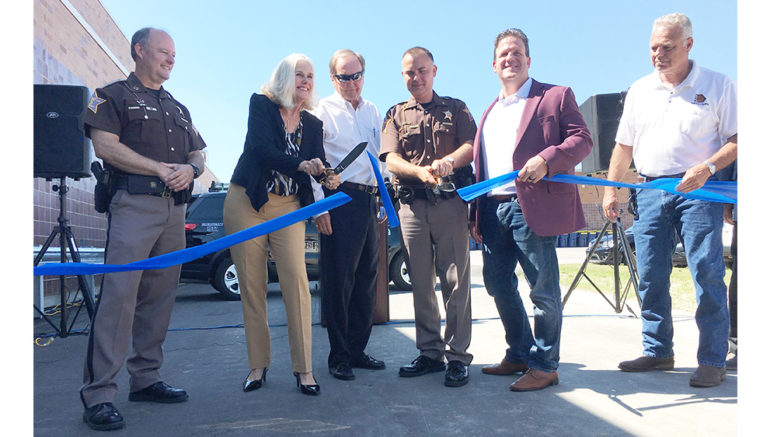Hamilton County held a ribbon cutting for its expansion of the county’s current jail Friday morning.
The $13.5 million project added over 100 beds and allows for future expansions as needed. The jail was built 25 years ago to hold 296 inmates. It currently holds nearly 400 inmates.
“We are adding 126 beds in this facility,” Sheriff Dennis Quakenbush told The Reporter. “As of today, we have a little over 400 inmates. This will put us at a 537-bed capacity. We have the ability to add capacity in the future if we need to, but there are no current plans to in the works.”
A change in state law in 2016 added to the county’s woes. House Bill 1006 requires lower-level felons to serve their terms in county jails rather than state prisons.
Quakenbush said there are multiple reasons this project, which was begun under Sheriff Mark Bowen, was necessary.
“The two primary factors are the exploding growth and success of Hamilton County – the number of people coming here over the last 20 years – and those prisoners who would be housed at the state level, due to House Bill 1006, are now being housed here in our facility,” Quakenbush said.

Quakenbush spoke briefly before the ribbon cutting and media tour of the new jail expansion. (Reporter photo by Stu Clampitt)
While 537 beds may sound like a large number, relative to other parts of Indiana, that is a low number. Hamilton County Commissioner Mark Heirbrandt said he is proud of how small the county jail is, relative to the population of Hamilton County.
“For a county of this size the inmate population is very low,” Heirbrandt told The Reporter. “When I travel all 92 counties throughout the state for my regular job, I look at the size of this jail, which was at 296 beds before the expansion. Having a population of almost 300k – that’s efficiency at its best!”
Heirbrandt and Bowen both credit collaboration between various agencies as key to keeping crime low in the community.
“I think a lot of it is the collaboration between the commissioners, the Sheriff’s Office, the prosecutor and the judges all working together to make this happen,” Heirbrandt said.
“The probation department and community corrections obviously play a big part in that,” Bowen said. “Hamilton County is blessed to be able to have a good working relationship with all of those entities to try to do the right thing and make sure we are serving folks’ needs and taking care of the underlying issues that need to be dealt with when it comes to making sure we are getting them on the right track and getting them the help that they need to try to prevent them from having to go to jail.”
 When asked about the challenges law enforcement faces in keeping the crime rate, and thus the inmate population so low, Bowen pointed to the secondary effects of the drug problem.
When asked about the challenges law enforcement faces in keeping the crime rate, and thus the inmate population so low, Bowen pointed to the secondary effects of the drug problem.
“For Hamilton County, like most counties across the state it is theft and burglary,” Bowen said. “Often what we are seeing is the systemic issue with the opioid and drug epidemic. People are stealing from each other in order to support the habits.”
Heirbrandt said another part of the low crime rate is found in Hamilton County’s focus on rehabilitation.
“We do a really good job of identifying some of the inmates who get in here who, even if they go through community corrections, need help with job placement,” Heirbrandt said. “Some lose their jobs because of this [incarceration]. We work with them and try to get them back into society.”
The jail expansion includes five cell pods with 38 prefabricated steel cells consisting of two and four-man cells. The expansion also includes an interior recreation area, classroom and medical support area. Existing space within the old jail will be designed to accommodate dining space for community corrections participants. Construction began in April 2018. Inmates will be moved to the new facility on July 8.
The jail expansion is powered by the solar project.

